(All photos taken by @paradigm42)
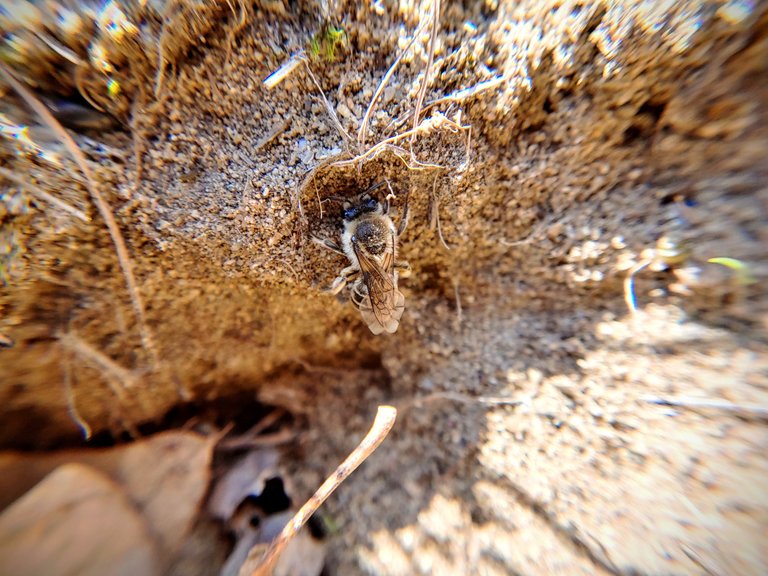
There are many different types of bees that are native to the US, and surprisingly the Honey Bee we all know and love isn't one of them. They were brought over from Europe over three hundred years ago and have thrived here in the wild and in part thanks to bee keepers ever since.
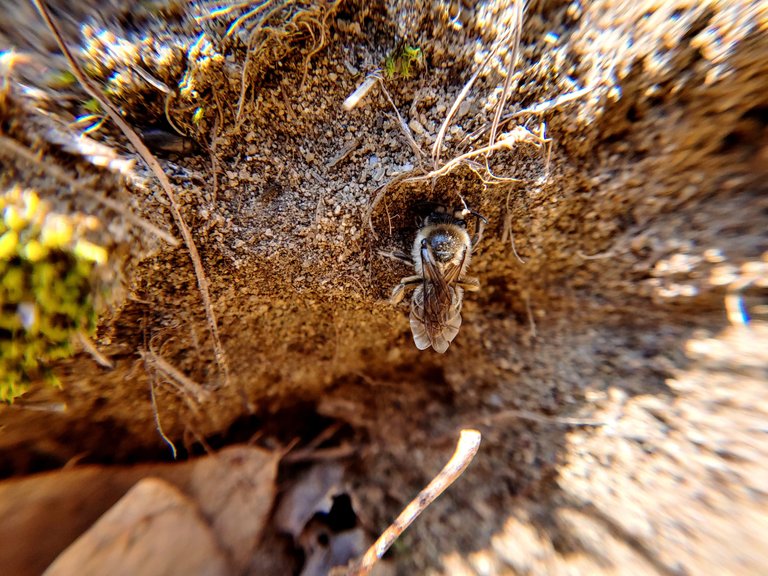
Now let me introduce you to one of our native unsung yet very important pollinators, the Ground Nesting Bee. They come in many different colors and types of markings. I think this one here is specifically a White Banded Digger Bee. Over 70% of all species of bees are ground nesting bees of some type.
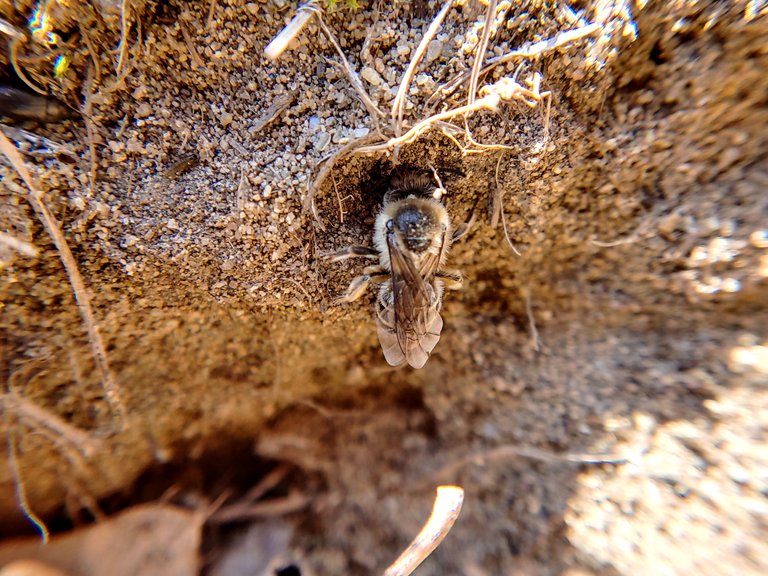
While Honey Bees live in large hive communities, Ground Nesting Bees are generally solitary. Each individual female bee builds their own nest to raise young in. I was lucky enough to come across this female about to start digging out her nest in my yard a little over a week ago.
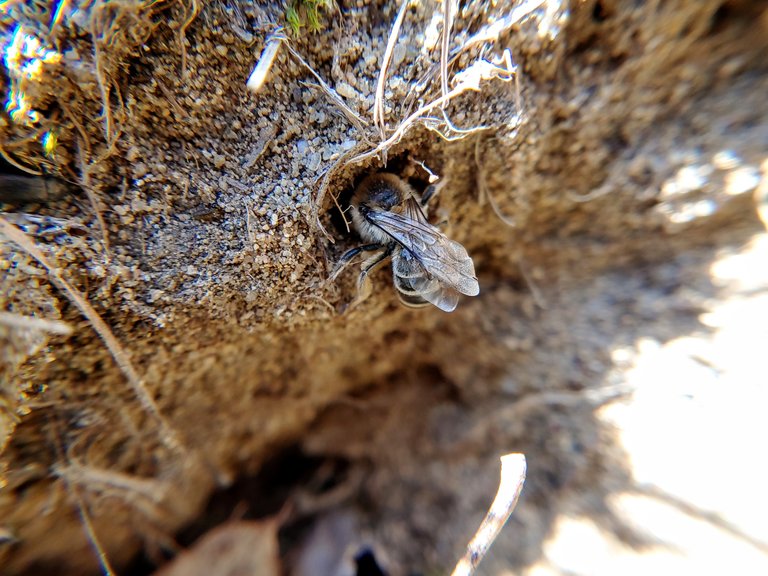
You can see her here starting to dig out her nest. Normally the nests are similar looking to an ant hill (conical in shape, with a wider opening at the top), but this bee started her nest in the side of a small cliff of dirt. (It would be rather large cliff from her perspective though.)
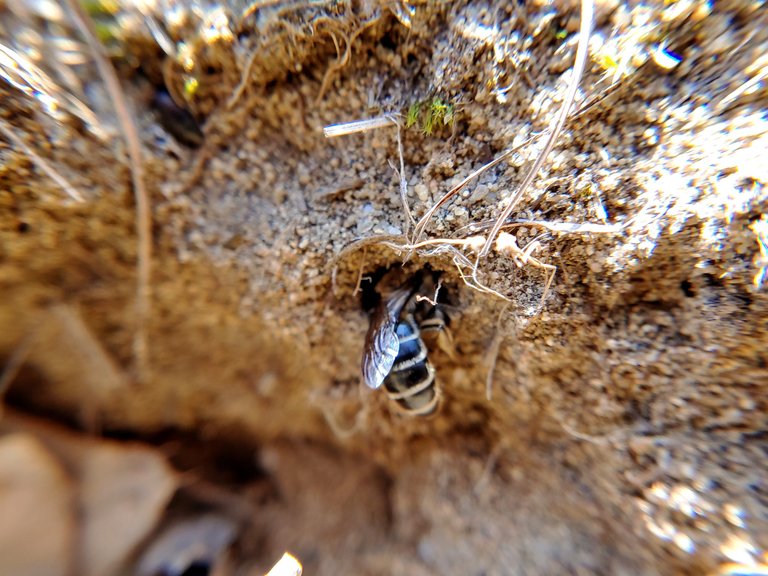
Ground Nesting Bees prefer dry sandy soil facing south. (Soil of which my yard has an over abundance of lol.) Even though the bees are solitary nesters, they will often makes nests near each other. In one area of my yard you can see several nests within less than 1ft of each other.
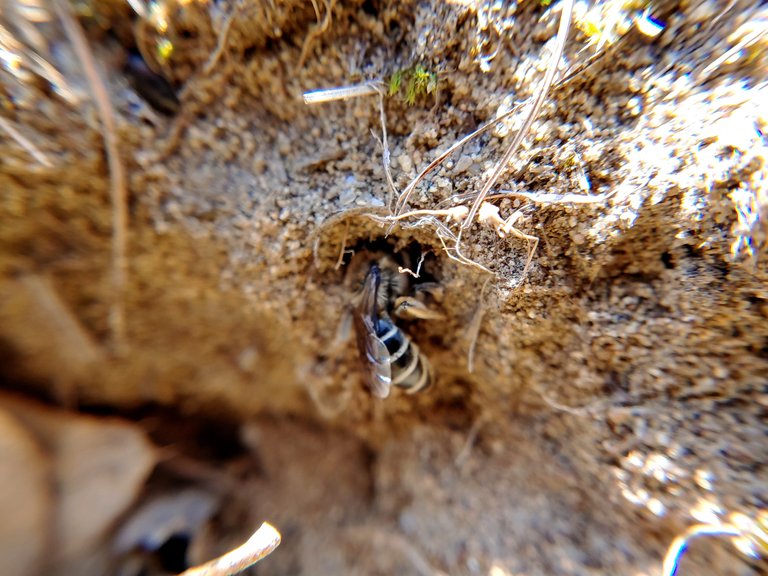
These bees are considered to be fairly docile compared to other types of bees. The males for the most part do not have stingers. The females can sting unlike their male counterparts, however they generally will only sting when handled roughly. I took photos of this bee from less than two inches away for several minutes and she paid me no mind at all, just went about her business like I wasn't even there.
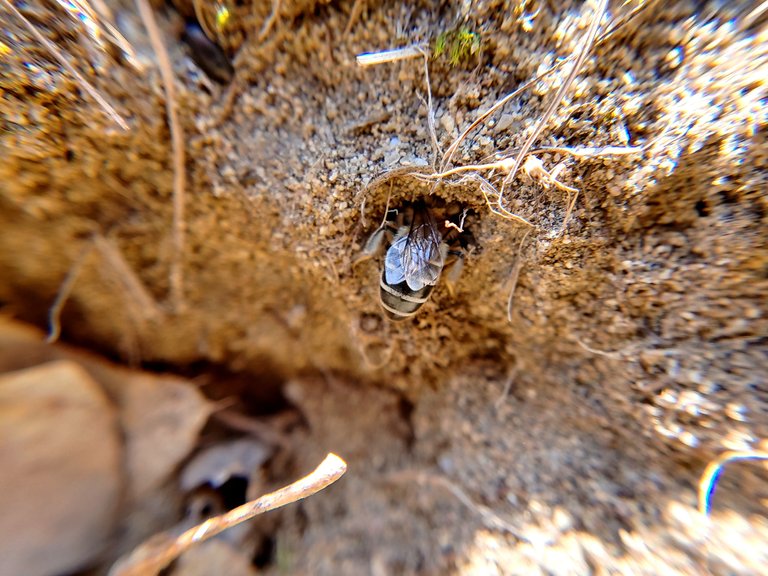
Once she has dug herself underground, she will dig several tunnels and open areas in order to lay eggs and store food. Ground Nesting Bees do not produce honey. They feed on nectar and pollen and store both in their nest sometimes in the form into loaves to later feed their young.
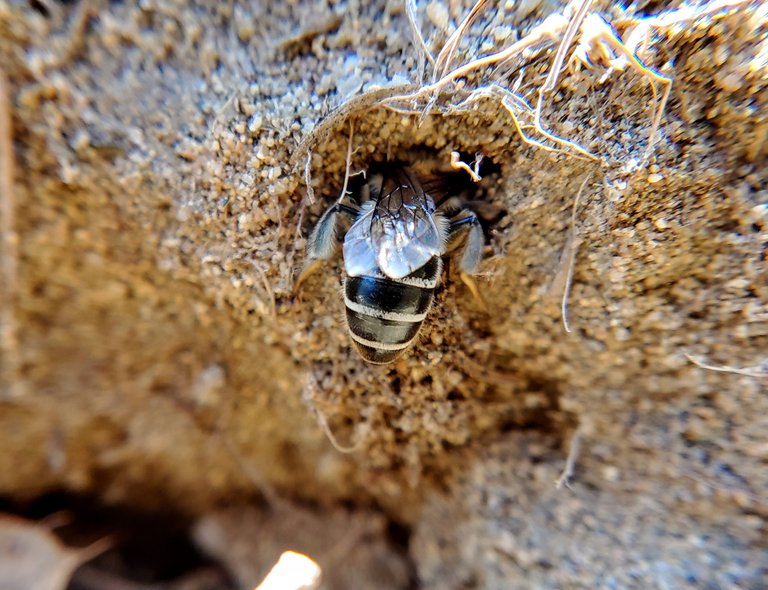
This type of ground nesting or "miner bee" will start mating in early spring and will spend the next six to eight weeks nesting, laying eggs, and gathering food for them until at the end of that time they pass from the earth, their life done for this turn of the wheel. Any eggs that are laid at the end of the season will not hatch until the next spring to start their cycle of life again.
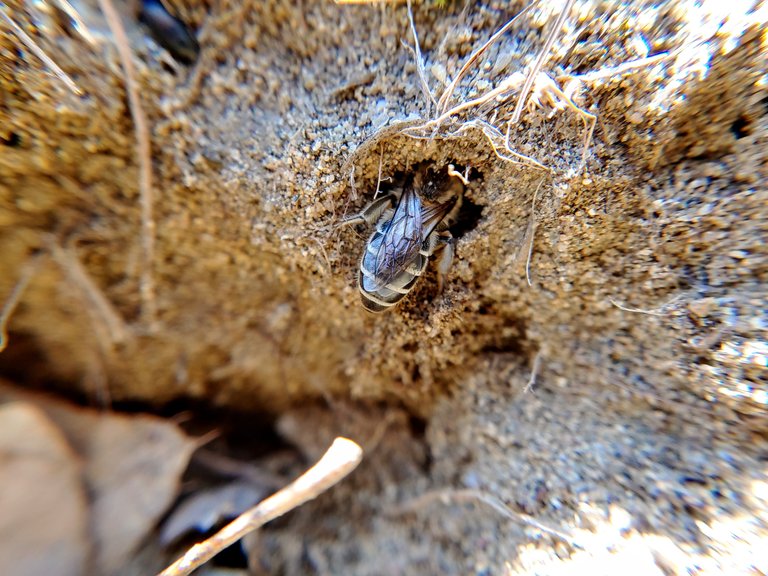
Ground Nesting Bees are great pollinators and should be considered every garderner's friend. They have been found to be especially beneficial to flowering fruit trees and berry plants. They help produce more yield at harvest than even honey bees do!

I hope you have enjoyed peeking in on the life of the nifty, interesting, and important pollinator, our friend the Ground Nesting Bee.
As always it's all about the little things in life,and thanks for looking in! :)
(Photos were taken with a LG 8 Thin Q 12mp camera, using a Xenvo 15x macro lens.)
Buen parafraseo de la información obtenida. Nunca he visto a esta abeja es muy curiosa. Gracias por compartir.
Information researched and used for this post was found on these sites:
https://entomology.cals.cornell.edu/extension/wild-pollinators/native-bees-your-backyard/
https://gardenerspath.com/how-to/animals-and-wildlife/ground-and-wood-nesting-bees/
https://modernfarmer.com/2016/06/ground-bees/
@tipu curate
Upvoted 👌 (Mana: 3/20)
Thank you very much! :)
You are very welcome! Great pictures and a nice lesson. Thanks for sharing.😀
Very well documented!
Many thanks 😀
Many thanks to you as well! I really enjoy documenting and learning about the different flora and fauna in nature! :)